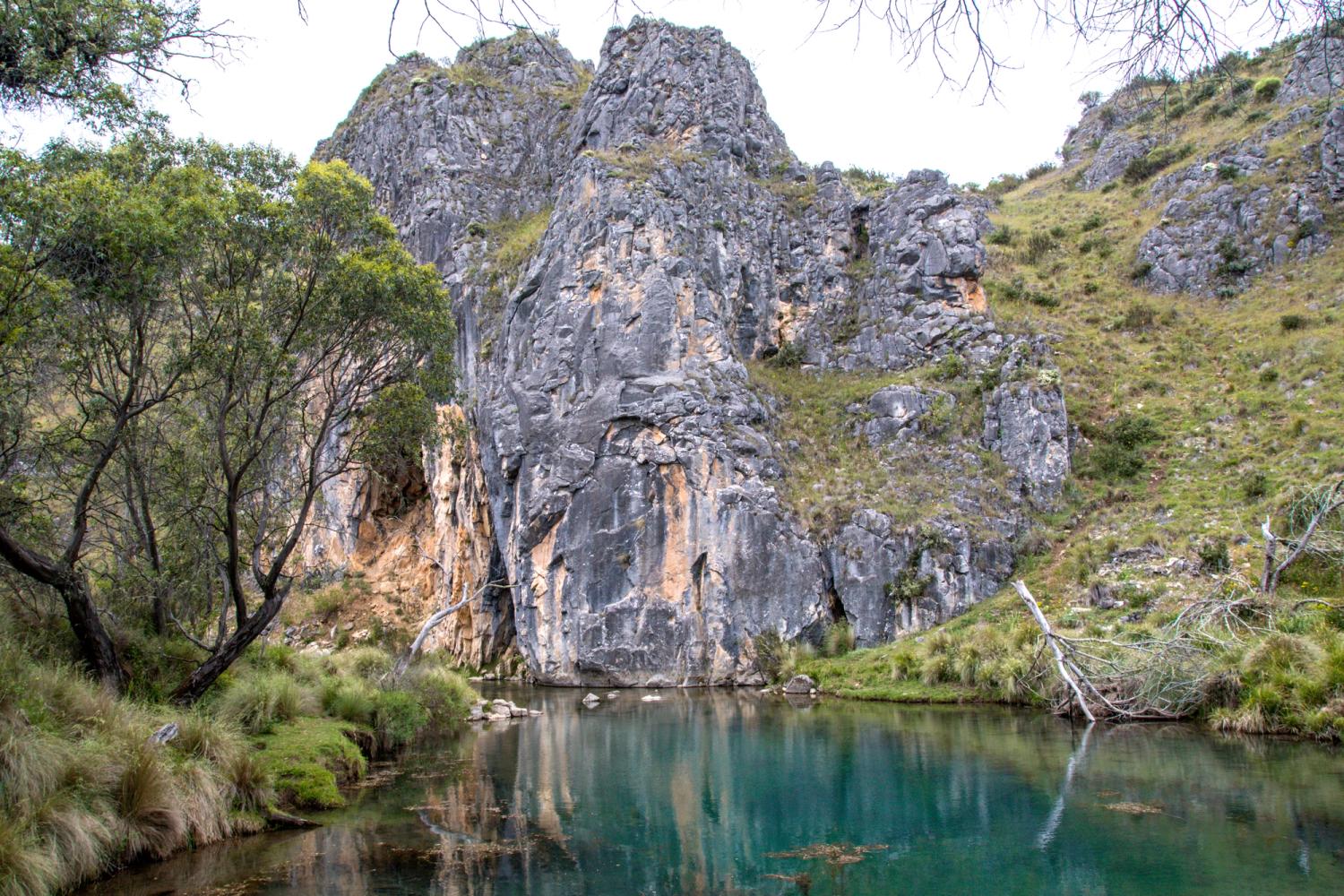Article from Unsealed 4×4.
Located 120 km north of New South Wales’ Cooma and only 110 km south-west of Canberra, Blue Waterholes is an incredible spot that you’ve got to add to your outdoor adventure bucket list.
If you’ve ever climbed Mt Kosciuszko you’ve likely overlooked Blue Waterholes without even realising it. The campsite is named after the series of blue waterholes that sit along the creek; the blue hue comes from the minerals in the karst cliffs that form the gorge.
How do I get there?
If you are heading from Canberra it’s safe practice to be in a high-clearance 4WD. Some of the track can be rutted and become very slippery in rainy conditions.
The route from Canberra is via Brindebella Road, Barnetts Road, Bramina Road and then on to Broken Cart Trail before getting on to Long Plain Road. Some of these roads are gated and locked between the June and the October long weekend, so take note of that when you’re planning. If you’re heading there from Cooma, you’ll want to travel via Rules Point.
Where can I stay?
Apart from the Christmas/New Year holidays and Easter period, you’re likely to have your pick of the campsites at either Cooleman Mountain or Blue Waterholes. Both options have pit toilets, grassy sites and fireplaces; and some have tables. All things considered, you’re setting yourself up for an excellent camping experience in a terrific location that’s relatively easy to get to!
The features
Although known for the waterholes, this area is filled with so many more opportunities. There’s the chance to hike, explore caves, swim in waterfalls and even toss your fishing line in.
The caves

If a limestone cave is on your list then you’ll want to check out Cooleman Cave, which you can access via the 7 km (return) Nichols Gorge walking track. It’s a challenging walk, but you don’t need to venture far before you reach the cave. The average person delves about 20 metres deep into Cooleman, but the more adventurous could go a lot further. Some of the caves are more serious in depth and distance, so they require experience, skills and specialised equipment.
The caves aren’t just a place for adventurers; these incredible formations are rich in history. The first Europeans to explore the caves were stockmen back in the 1830s. The area was then recognised and reserved for public recreation in 1882.
Murray’s Cave is further up Cave Creek and is the least visited. A lot of the water in Cave Creek is actually running underground and doesn’t surface until the Blue Waterholes.
The huts

Grazing commenced in the 1830s with the establishment of some stockyards at the Cooleman run. The Coolamine Homestead and ancillary buildings are certainly worth visiting and are located just off the road that leads into the waterholes. The two-room slab hut was built in 1883 with additional buildings being built since. The last permanent resident of Cooleman Homestead left in 1958.
The buildings fell into disarray until the process of stabilisation and reconstruction occurred in the 1980s. In the days before roof insulation, newspapers provided both insulation and a form of wallpaper in the huts. Some of this can still be seen, providing an interesting insight into how life used to be before we had the pleasure of TVs and smartphones.
The gorge

The 5 km Clarke Gorge walking track follows Cave Creek downstream through limestone gorges and cave formations. There are numerous creek crossings as you walk through Clarke Gorge, looking up at its grey walls of limestone. It’s important to take it slow as the track is narrow and rocky, but it does have a shallow gradient. The first creek crossing on your way to Clarke Gorge will probably have you taking your shoes off to keep them dry. By the third crossing, you’ll likely just be walking through – boots and all.
As you exit the eastern side of the Gorge, the rough track continues on towards a picturesque waterfall before plunging into Wilkinsons Gorge. Be careful while you soak up the view – there have been sightings of black snakes on the track, so keep that in mind as you make your way down!
The waterholes

After a swim in the waterfall, the pristine swimming holes, known for their blue hue, are another refreshing stop where you can take a dip whilst admiring the landscape. They’re bookended by the Clarke and Nichols gorges, surrounding you in the wonders of nature. The incredible blue colour is formed by the water’s high calcium carbonate content, dissolved from the area’s limestone.
What else?

There are trout in Cave Creek and fishing is allowed, so consider throwing a line in and see how you go. Before you do, note that a current NSW recreational fishing licence is required when fishing in all waters. If you’re a biker, be sure to check out the fire trails, which make for great mountain bike rides.
So when are you heading off?
Blue Waterholes is an incredible camping spot, filled with activities that anyone with a sense of outdoor adventure would appreciate. It’s conveniently located off the beaten path, yet not too far from Canberra, making it the perfect, quick getaway. If you feel like exploring more whilst you’re there, the nearest town is Talbingo, approximately 40 km away along the Snowy Mountains Highway.


